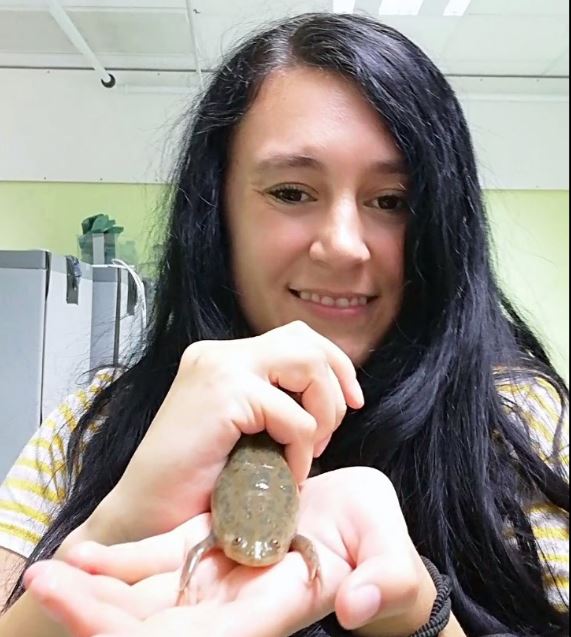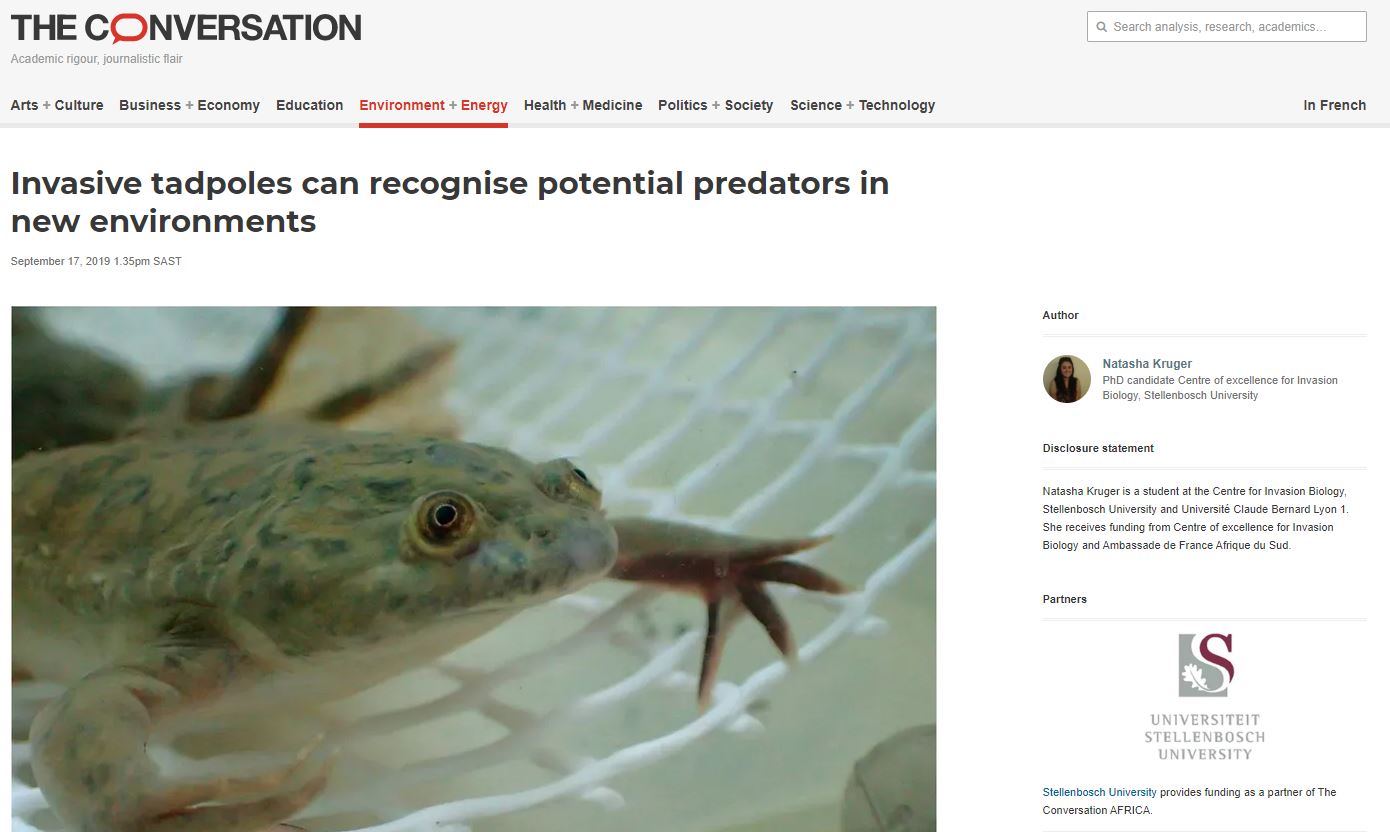Do you know whether it's friend or fo?
When alien species are moved to a new environment, they have a whole new set of predators and prey to become accustomed to. To determine whether the novel sensory inputs are predators or prey is very important, as this can translate to life or death. While adult frogs have sophisticated sensory organs, their tadpoles' senses are less developed but recognising predators is still very important.
In this popular piece for The Conversation, Natasha Kruger explains how African clawed frog, Xenopus laevis, tadpoles reacted when they were exposed to smells from different species in France. Natasha explains how familiarity with some of the smells, like predatory diving beetles, might be more famliiar than others, like crayfish which are not-native in sub-Saharan Africa.
What did the tadpoles do?
You can read Natasha's explaination in this excellent popular write-up.
Natasha's PhD has been investigating the role of tadpoles in the invasion of the African clawed frog, Xenopus laevis. We're looking forward to lots of revelations of how tadpoles differ from their adult forms.
Kruger, N (2019) Invasive tadpoles can recognise potential predators in new environments. The Conversation. https://theconversation.com/invasive-tadpoles-can-recognise-potential-predators-in-new-environments-119673


